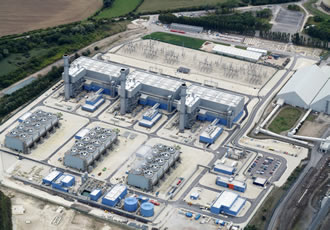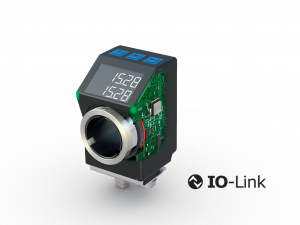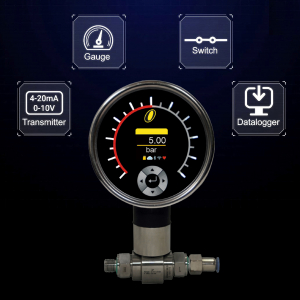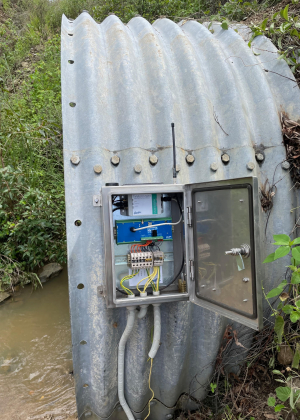Reliable silica monitoring supports power station efficiency

West Burton B CCGT is a Combined Cycle Gas Turbine power station near Nottingham in the UK. It has three open-cycle gas turbines capable of generating enough electricity for approximately 1.5 million UK homes. In common with all combustion based power stations, the CCGT has a requirement to monitor silica levels in the Plant’s water and steam processes. Sean Todd, the Plant’s Control & Instrumentation (C&I) Team Leader, says: “Boiler chemistry is one of the major challenges facing power plant managers, and the monitoring systems that were originally installed at this plant met the required specification but failed to deliver the accuracy and reliability that we need.
“At the Start of February 2014, we replaced the monitors with HACH 5500sc Silica Analysers and have been absolutely delighted with the results; over the last ten months, the new monitors have proved to be extremely accurate and reliable, requiring very little maintenance.”
Prior to the installation of the HACH 5500sc Silica Analysers, the unreliability of the original monitors meant that manual samples had to be taken twice daily from multiple points. Some of these samples were tested in a site laboratory, but others had to be sent to a sister laboratory approximately 50 miles away. This incurred excessive costs and delays. Furthermore, the original monitors required frequent recalibration, causing a heavy maintenance requirement and resulting in excessive use of reagents.
The importance of Silica
Making up a large percentage of the earth’s solid crust, silicon (Si) is second only to oxygen in natural abundance. Silicon is present in small concentrations in all natural water supplies, usually as dissolved silica or as small suspended silicate particles (colloidal silica). Silicon dioxide, also known as silica, is a chemical compound that is an oxide of silicon with the chemical formula SiO2. Silica is highly soluble in steam, so if sufficient quantities are present, it may deposit as a glass-like substance on the surfaces of turbine blades and boiler tubes.
Silica deposition on turbine blades can cause pitting and other defects, however, it is also likely to cause an imbalance in the blades, which in turn causes vibration and could even result in failure due to the fine tolerances between turbine blades and outer casings. Turbines cost tens of millions so effective inspection and maintenance is a high priority. Silica deposition in boiler tubes is also to be avoided because it causes a loss of thermal efficiency, thereby reducing the efficiency of the whole plant.
Monitoring systems
Silica concentration data is required to demonstrate compliance with the required levels for boiler feedwater and saturated steam. However, the data is also necessary for operational purposes; to control pH in the boilers with ammonia dosing for example. In addition, the data is required for insurance purposes.
In order to avoid silica deposition, high levels of treatment are necessary to produce almost totally demineralised water. CCGT draws its water supply from the River Trent and a variety of treatment processes are necessary before the water is pure enough for use. These processes include sedimentation, filtration, flocculation and ion exchange. The silica analysers draw treated water samples from the plant to ensure that levels are within acceptable limits. Online samples are also drawn from strategically located points in the plant to ensure that silica levels remain at acceptable concentrations throughout the process.
Online monitoring is conducted in two locations; in the Water Treatment Plant for monitoring the efficiency of the ion-exchange plant and in the ‘boiler analyser house’ which contains two Hach 5500sc silica analysers, a Hach 9240 sodium analyser, two HACH ORBISPHERE K1100 LDO optical dissolved oxygen probes, five pH probes and twenty one conductivity probes. Continuous water samples of steam and blowdown steam are delivered to the analyser house by a network of sample tubes from around the plant.
The new HACH ORBISPHERE K1100 LDO (luminescent dissolved oxygen) probes have also helped to minimise the maintenance requirement of the monitoring systems. Employing an optical measurement technology, these probes only require calibration every 6 – 12 months and an optical spot change every few years. This is in stark contrast with the older electrochemical membrane-covered DO sensors that actually consumed oxygen as part of the measurement process and tended to drift, which meant that they required frequent recalibration. A portable version of the ORBISPHERE 3100 LDO is also employed by the site’s boiler chemist, enabling them to conduct rapid measurements at any point on the plant.
The HACH 5500sc Silica Analysers take measurements from each sample stream every 15 minutes, which provides Sean Todd and his team with almost live data on performance and enables them to take appropriate action before alarm levels are reached.
The 5500sc measures silica by reacting samples with molybdate ions under acidic conditions to form silicomolybdic acid complexes. The addition of citric acid destroys the phosphate complexes, and amino acid reagent is then added to reduce the yellow silicomolybdic acid to an intense blue colour, which is proportional to the silica concentration, and measured optically at 815 nm. Typically, just two litres of reagent are required for the analyser to perform unattended for up to 90 days.
An important innovation in the 5500sc analysers, which has dramatically improved accuracy and reliability whilst reducing costs, is the industry's only pressurised reagent delivery system which eliminates the frequent maintenance associated with pumps. “The cabinet inside the analyser is pressurised, and this is released when the door is opened,” says C&I Technician Nick Craddock . “It is then a simple and clean procedure to swap the bottles.”
The analysers autocalibrate once per week, using an internal 500 ppb Silica standard, and Nick Craddock says: “The reading is normally 501 or 502 ppb so these new monitors are incredibly accurate, and much lower cost to run – we change the reagents every 90 days, whereas we used to have to change them after about 30 days. In addition to silica measurements, the analysers also provide a continuous update on their ‘health status’, which enables preventative maintenance and helps avoid downtime.”
Instrument health status is managed by the PROGNOSYS software package. The HACH 5500sc silica analysers operate and configure the software, displaying horizontal bars as a measurement value indicator and as a service indicator for the remaining time until the next maintenance task - green, yellow and red indicators show the status of each sensor. The service messages supply information on maintenance tasks that the user must complete (e.g., to clean the sensor or replace the reagents). All service messages have a countdown period with sufficient time to contact a service technician or to order a replacement part.
Following the installation of the new monitors, HACH LANGE was awarded a service contract which will involve biannual visits to check and refurbish the monitoring systems.
Conclusions
Summarising, Sean Todd says: “As a CCGT power station we have an extra focus on accuracy because of the finer tolerances that feature in this plant, so there is a greater emphasis on the performance of our monitoring systems, and with a small C&I team, we are constantly seeking new ways to reduce maintenance requirements and improve efficiency.
“Boiler chemistry is an important issue for us, so the development of accurate, reliable silica monitors has been an enormous benefit. The operators of other power stations are of course very interested in our success, and we are very happy to share our experiences with them.”
Similar articles
More from HACH LANGE LTD
- Reliable silica monitoring supports power station efficiency 30th June 2015
- Certification improves efficiency of water monitoring 26th February 2013
- HACH LANGE awarded 200th MCERTS certificate 7th September 2012
- HACH LANGE nutrient monitors shine in final effluent trial 3rd September 2012












Write a comment
No comments